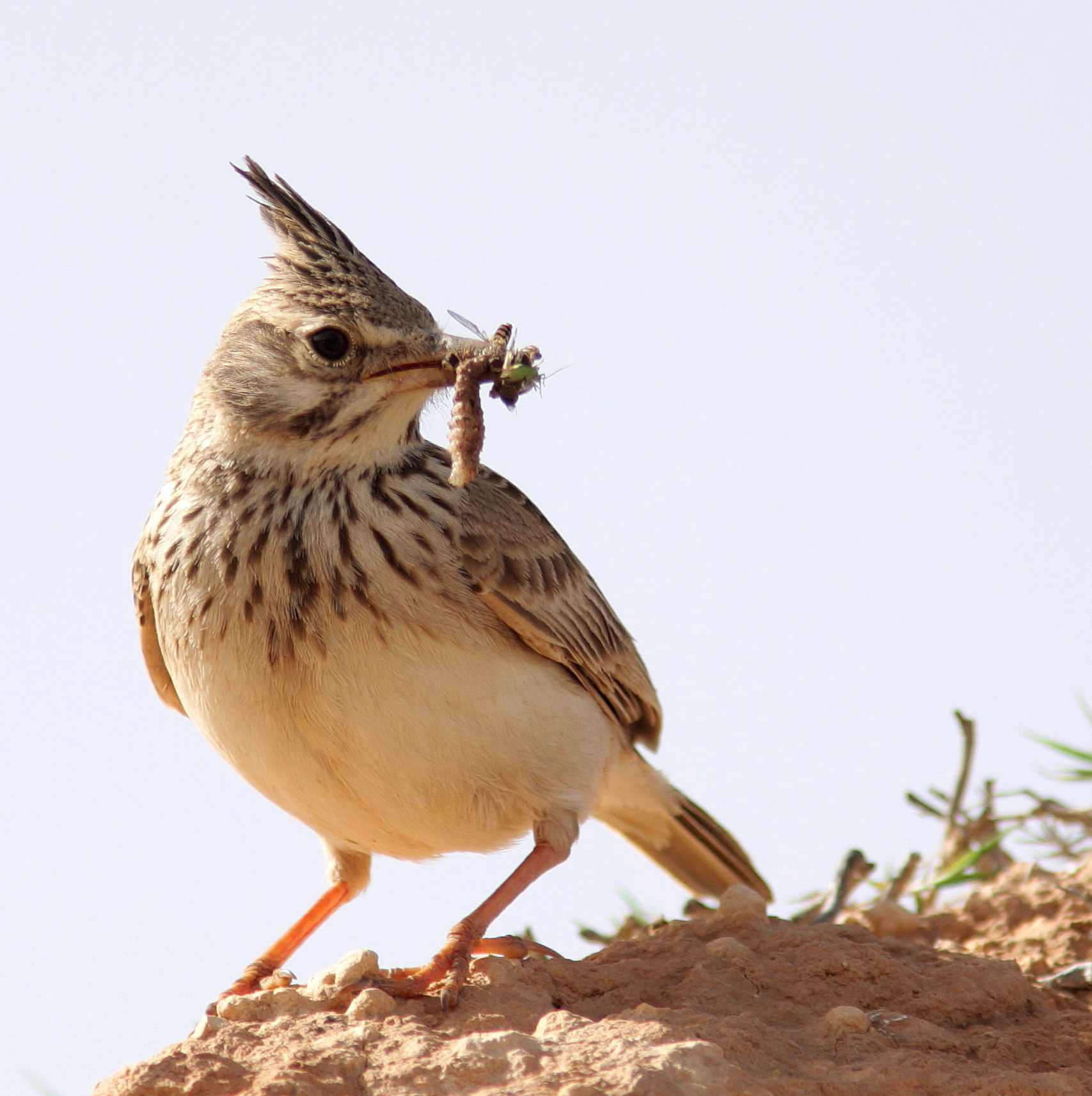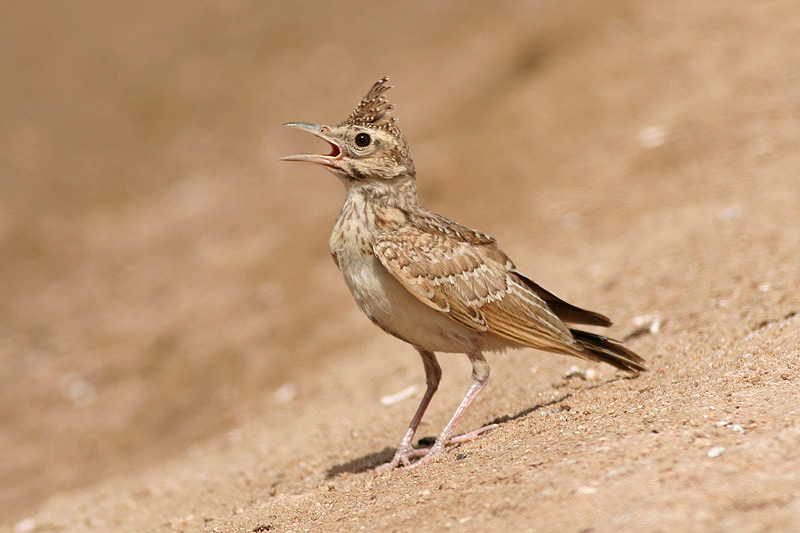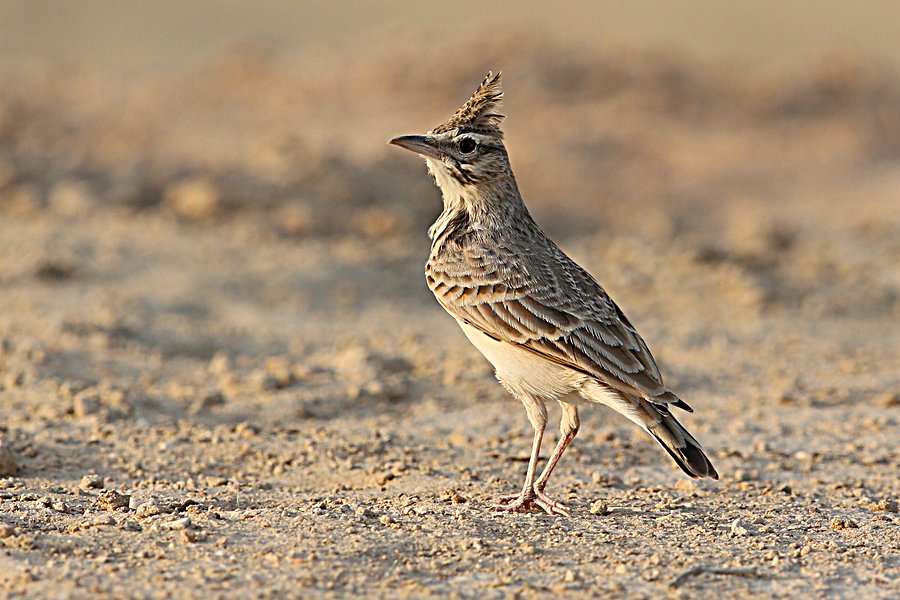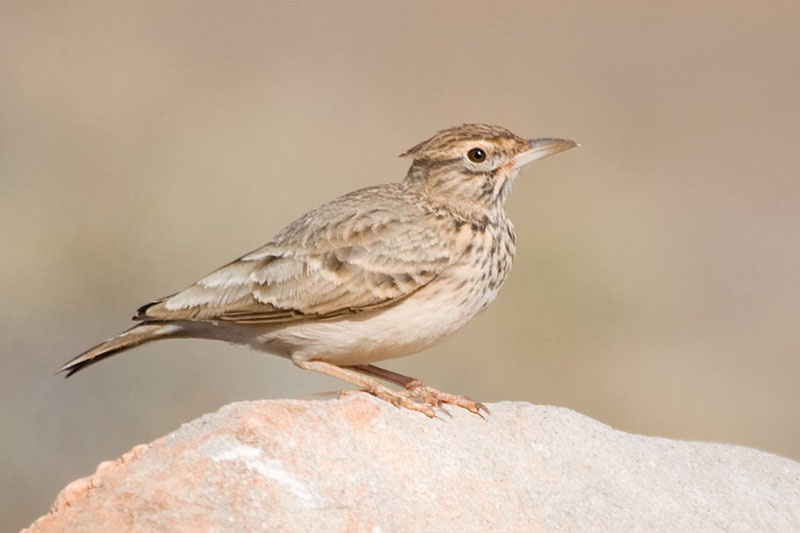
Galerida cristata
TAXONOMY
Alauda cristata Linnaeus, 1758, “in Europae viis” = Vienna.
OTHER COMMON NAMES
French: Cochevis huppй; German: Haubenlerche; Spanish:
Cogujada Comъn.
PHYSICAL CHARACTERISTICS
6.7 in (17 cm); male 1.3–1.8 oz (37–52 g); female 1.3–1.7 oz
(37–48 g); not as large as skylark, more robust, with stronger
bill and longer crest. Uniformly dull-colored plumage, upperparts
and breast heavily streaked, sexes alike. Very similar to
Thekla lark, its sibling species.
DISTRIBUTION
From southern Europe as far as southern Scandinavia. North
Africa south to Senegambia, eastward through Chad and Sudan
to Ethiopia and Somalia. Does not occur in the Sahara. Breeds
from Arabian Peninsula toward India, Nepal, Mongolia, China,
and Korea. In southern France and North Africa east of Libya,
sympatric with Thekla lark.
HABITAT
Variety of habitats, mainly open areas with sparse vegetation,
also cultivated land and other man-made semideserts such as
railways, airfields, and wastelands. Where it co-occurs with the
Thekla lark, the crested lark occupies the plains, the Thekla
inhabits rocky and bushy slopes.
BEHAVIOR
Largely sedentary, not gregarious, low flight distance. Songflight
starts from perch, male ascends silently at angle up to
230 ft (70 m), then utters loud and melodious song ascending
further up to 330 ft (100 m) and more, flying wide circles over
territory. Song, uttered on ground or from perch, lasts four
minutes on average, but up to 30 minutes have been observed.
Known to perfectly imitate other bird songs and calls. One extraordinary
example, the imitation of a shepherd’s whistle reproduced
so accurately that sheep dogs obey the signals as if
the shepherd has given them.
FEEDING ECOLOGY AND DIET
Diet consists mainly of vegetal food; seeds and green plant material
taken from ground or picked directly from plants; food
remains in horse-droppings also exploited. Can husk seeds. Animal
food taken to larger extent during breeding season, but
proportion is negligible during rest of the year. Young fed with
insects and worms.
REPRODUCTIVE BIOLOGY
Monogamous. Breeds April–June in Europe; female builds
cup-shaped nest alone, lays three to five, rarely seven, eggs.
Incubation by female alone, 11–17 days. Both parents feed
young, which leave nest after eight to 11 days before being
able to fly.
CONSERVATION STATUS
Not threatened.
SIGNIFICANCE TO HUMANS
None known.
Other popular Animals
Photo Gallery of - Crested lark




 Animalia Life
Animalia Life